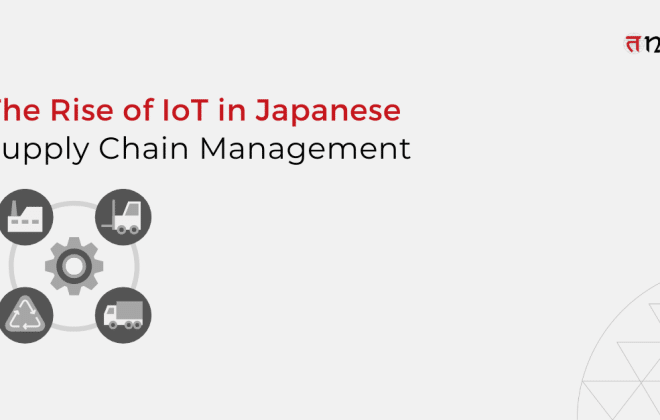
Japan’s Digital Revolution: Fueling Innovation and Economic Growth
Digital transformation in Japan accelerates innovation, drives economic growth, and enhances the quality of life. Investments in HealthTech, such as Telemedicine, increase access to healthcare, particularly for the elderly and in rural areas. Additionally, to build Society 5.0, it promotes a cashless society, better cities, and better supply chain and connectivity, all of which raise living standards. Digital transformation alters industries like e-commerce and banking with faster operations, better efficiency, and tailored experiences. Overall, Japan’s digital transition revolutionizes many facets of life, fostering societal breakthroughs, economic progress, and accessibility.
MUFG (Mitsubishi UFJ Financial Group), one of Japan’s largest financial institutions, is leveraging digital transformation to enhance its services and improve efficiency. The bank’s efforts are a primary example of digital transformation in Japan. It aims to utilize automation and robotics technology to streamline branch operations and allow bankers to focus on serving wealthier clients. Kanetsugu Mike, the CEO of MUFG’s wealth management unit, highlighted the potential of robotics technology to eliminate time-consuming document processing tasks, enabling more personalized customer interactions.
The bank plans to implement “robotics process automation” for half of its branch operations by March 2024, handling the equivalent workload of 9,500 employees. This automation will accelerate the digital transformation pace and efficiency and allow the bank to better support its 1.2 million high-net-worth clients. By reducing manual work, MUFG intends to enhance the quality of its customer service and strengthen relationships with its wealthier clientele.
Additionally, MUFG recognizes the importance of digital expansion in overseas markets. The CEO emphasized that overseas business will continue to be a growth driver, with potential acquisitions in Asia and the United States. While the bank has experienced significant balance sheet growth in recent years, it now aims to use its resources more prudently, focusing on leveraging digital technologies to optimize its operations and provide innovative financial solutions.
Source: Reuters
What are the Key Factors Driving the Need for Digital Transformation in Japan?
Japan is pursuing a digital transformation to tackle several issues and take advantage of new opportunities. Its society and economy face many challenges that make digital adaptation necessary.
With a falling birth rate and a longer life expectancy, Japan has one of the fastest-aging populations in the world. The nation’s potential workforce, including people aged 15 to 64, reached its high in 1991–1993. However, it has decreased significantly since then, peaking at around 59%. Digital transformation is required due to this demographic shift to reduce labor shortages and sustain economic output.
As mentioned earlier, Japan’s aging population and shrinking labor force are severe obstacles to the economy’s expansion. The International Monetary Fund forecasts a probable fall of almost 25% in real GDP between 2019 and 2059 due to a predicted 20% decline in the workforce between 2017 and 2040 and labor productivity growth below 2% over the previous two decades. To solve this, Japan’s growth engine needs to be revitalized, and digital transformation is crucial.
Japan is a cash-based country. Thus, it has to deal with the inefficiencies and high costs of cash transactions. As per an article, around 20% of Japan’s total cash circulation in 2016 comprised large-denomination notes, which comprised more than 75%. Moreover, only about 10% of Japan’s GDP is accounted for by card payments. Cashless transactions and encouraging digital innovation can benefit the nation’s convenience, effectiveness, and economic growth.
Businesses can disrupt conventional models, increase their value propositions, and boost productivity by implementing local digital transformation. However, the Minister of Digital Transformation’s admission of a “digital defeat” during the epidemic highlights the delay in digital adoption. According to a survey, only 28% of Japanese firms have online remote work solutions in place as of 2020, and 45% either weren’t contemplating or weren’t aware of such digital technology.
By 2030, Japan might unlock an economic value of JPY67.7 trillion ($628 billion) by entirely using digital transformation. Additionally, small and medium-sized businesses are predicted to account for 43% of the nation’s economic output, or JPY29.3 trillion (USD272 billion).
To achieve this, there is a need for increased adoption and implementation of digital technologies across various sectors. At such times a trusted software engineering partner like Tntra, can help Japanese enterprises.
Japan’s Digital Transformation: Accelerating Growth and Development
The evolution of society from hunter-gatherer to the information age has now set the stage for Society 5.0. In this new era, the vast amount of Big Data collected through the Internet of Things (IoT) will be harnessed and transformed into valuable intelligence through IP-led product engineering services and Artificial Intelligence (AI). This intelligence will permeate all aspects of Japanese society, ensuring people’s lives become more comfortable and sustainable as they receive products and services precisely when and in the quantities they need.
Japan possesses a unique advantage in this transformation. The country has accumulated a wealth of real- data and advanced technological capabilities nurtured by the principle of “Monozukuri” or excellence in manufacturing. Additionally, Japan has a strong foundation in basic research. These factors position Japan favorably to create products that leverage cutting-edge New Economy technologies like Big Data and AI, which can be seamlessly integrated into society.
By combining the accumulation of real-world data, manufacturing prowess, and implementing New Economy technologies such as AI, Big Data, Machine Learning, Blockchain, and Cloud computing, Japan can address societal challenges ahead of other nations. These challenges include a declining productive-age population, aging populations that need good healthcare and energy, a high cash-dependent society, environmental concerns, and more.
Digital transformation in Japan enhances productivity and creates new markets, aiming to establish a vibrant economic society and serve as a model for Society 5.0 worldwide. By leveraging its strengths, Japan leads the way in overcoming challenges and shaping a prosperous and sustainable future.
Issues and Solutions: Benefits of Digital Transformation in Japan
Japan’s digital transformation initiatives are redefining the economy, enhancing productivity, positively impacting various aspects of social life, fostering innovation, and creating a technologically advanced society. The benefits of transformation can be understood with the help of issues and their corresponding digital solutions.
| Issues in Healthcare | Solutions |
| Japan is grappling with the challenges of an aging population, leading to rising medical and social security costs and increased caregiving needs for the elderly. | 1) Make it possible for users of medical data to easily share their records of diagnoses, treatments, and nursing care. 2) Introduce remote medical care services to deliver healthcare remotely, improving patient comfort and accessibility. 3) Leverage IT consultancy services in Japan to develop AI/ML solutions and robots in nursing homes to raise the standard of care. |
Effective data-driven medical care can be delivered by integrating and exchanging distributed medical data. Remote medical treatment through Telemedicine lessens the need for frequent hospital visits, and home health monitoring makes it possible to manage health data, increasing the average lifespan of healthy people.
| Issues in FinTech | Solutions |
| Cash transactions are still common in Japan, and the banking process is onerous. Due to the limited willingness to embrace software product engineering services, convenient financial services, and more, cashless payment methods and digital financial services are being adopted slowly. | 1) Work with reputable software technology partners like Tntra with a Design for Cashless Methodology. 2) Transfer money using Blockchain technology. 3) Give banks and FinTech companies access to open application programming interfaces (API). 4) Encourage cashless transactions. |
FinTech application development benefits Japan, including improved efficiency, a cashless transaction ecosystem, financial inclusion, competition, innovation, and the possibility for economic growth as the financial sector is modernized.
| Issues in Supply Chain and Mobility | Solutions |
| Due to a dwindling population, rural areas of Japan are underpopulated and have limited access to public transit. Additionally, there is a lack of drivers in the quickly expanding e-commerce industry to satisfy the demand for deliveries, which makes it difficult to provide effective and prompt service in these locations. | 1) Boost the use of taxis and buses with software-enabled autonomous driving to increase access to transportation in remote areas and guarantee convenient public transit options. 2) Use software solutions, including AI/ML, IoT, AR/VR, and other technologies, to improve logistics, mobility, and distribution efficiency and handle transportation issues in the booming e-commerce sector. |
Digital adoption can enhance Japan’s supply chain and public mobility. Digital solutions may optimize logistics, improve inventory management, and enable efficient transportation using IoT, AI, and data analytics technologies. This results in a more robust and efficient supply chain and improved public mobility.
| Issues in Infrastructure Management | Solutions |
| Japanese public infrastructure is deteriorating, worsened by an aging population and a labor shortage. This circumstance worsens the country’s financial burden and presents manpower issues, notably in inspection and maintenance. | To maintain roads, bridges, tunnels, and dams safely and productively, inspection and maintenance systems can use robotics, sensors, and ICT to discover repair needs early on. This helps to reduce accidents, shorten construction times, and increase safety and productivity. |
Infrastructure management in Japan can be improved by digital transformation technologies that enable effective monitoring, preventative maintenance, and data-driven decision-making. This enhances safety, extends the life of crucial assets, and optimizes resource allocation.
Witness the transformative power of Tntra’s expertise and solutions. Read our captivating case studies now!
Conclusion
Japan’s adoption of digital transformation speeds up innovation, promotes economic expansion, and builds resilience. Through the implementation of IoT and cashless transactions, it improves efficiency while promoting corporate growth and cutting costs. Additionally, it enhances the consumer experience with easy and personalized digital technologies.
Through investments in HealthTech technologies like Telemedicine, the digital transformation is revolutionizing healthcare in Japan and ensuring better access to care for the elderly and distant locations. Furthermore, it promotes a cashless society, smarter cities, and improved infrastructure, supply chain, and mobility, all of which raise the standard of living and quality of life for people in Japan. The digital transformation in Japan is proving necessary to drive these positive changes and contribute to society’s advancement.
Are you an enterprise in Japan looking to digitize your operations? Tntra is your trusted software engineering partner, ready to assist you with your digital transformation ambitions.
Contact team Tntra today!!




